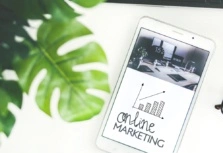What if we told you there is a one-size-fits-all Shopify sales funnel? Well, there is one model of marketing funnel for Shopify and it works!
In this article, we’ll explain what is Shopify sales funnel is and how you can use it to help you sell more.
First of all, let’s get familiar with some theory behind this method. Don’t worry - we’re not planning to bore you with the details. We’re here to help you sell, not to write a thesis. Yet, we still need to cover some basics so you could apply this Shopify conversion funnel in practice with more success.
Let’s dig in!
Sales funnel for Shopify - what’s that?
Simply speaking, Shopify sales funnel is a marketing funnel that shows the steps your store’s visitors go through before they decide to buy from you. In fancier words, it visualizes your store’s customer journey.
A marketing funnel consists of 5 different steps, or stages and here’s what it looks like:
- Awareness stage. This is the initial stage where you have the most people in your Shopify sales funnel. It’s when people become aware you exist - they notice your ads, read one of your blog posts, look around your website.
- Consideration stage. If you’re lucky (well, more like, if you put enough effort into building your Shopify store), your store’s visitors will start thinking about buying from you. At this stage, they will compare you with the alternative stores that sell similar products.
- Conversion stage. Ka-ching! This stage stands for the thing we all want the most - sales. When your store’s visitors ‘convert’, it means they buy from you.
- Loyalty stage. You don’t want your customers to buy from you just once. You want them to return to your store. This is what the “loyalty” stage of the Shopify conversion funnel is all about - repeat purchases.
- Advocacy stage. The last stage of the funnel, and the most narrow one, represents your customers that are so happy with your products or service, they begin to spread good words about you - they leave positive reviews, recommend you to their friends. You want to get to this stage, trust us.
If you’re wondering why these five steps are literally shaped like a funnel, that’s because, at each step, your store’s visitors will drop out.
People will leave your store either a few seconds after they land on your homepage to check you out, or minutes, or days later when, at the last minute, they decide not to buy those sandals they put in their cart.
Don’t worry, it’s only natural - you can’t keep everyone interested through the end! However, you need to know where’s the biggest leak happening in your funnel so you can work on it to increase your sales.
For example, you can check your visitors’ behavior on your store by analyzing your Google or Shopify Analytics data. Tools like Hotjar are also great to help you understand how visitors behave on your Shopify store.
Well, look at you - you got through the theory! You’re closer to making more sales than you ever were before.
Now, let’s see how you can create sales funnel in your Shopify store!
1. Awareness stage - attract the right visitors to your Shopify store
Awareness is the first stage of the Shopify conversion funnel. It’s when you let your potential customers know you exist and start building trust with them. During this stage, you start generating leads - you try to attract people who are likely to become your potential customers.
Here are a few ways you can attract people to your online store:
Build your presence with Facebook ads
The best way to start would be to think about what kind of problems your potential customers might have. Once you have them figured out, use Facebook ads to showcase your products that will solve those problems.
In other words, don’t just sell a watch, sell the promise of never being late again! Thought-out Facebook ads will help you build a strong brand presence - your potential customers will start to associate you with solutions to their problems.
If you’re new to Facebook advertising, we can help you run your Facebook ads on autopilot - you won’t need to worry about a thing!
Show up in Google
Now, try to remember the last time you wanted to buy something but didn’t know where. What did you do? You googled it.
Chances are your store will not appear in the first positions in Google search results if you’ve recently launched your shop. That’s where Google ads step in.
Google ads are great because they let you get in front of people who are actively looking for the products you’re selling. You get to the top of the page with minimum effort! Simply write a compelling ad copy and include the right keywords you want to be found for.
For one thing, with Google ads you’ll be able to increase your sales. For another, you will be able to test your business model, too. You’ll eventually see what kind of products people buy, what kind of copy sells the best. Then, you’ll be able to make better informed decisions about how to go on with your SEO strategy to increase your organic visibility on Google.
PRO TIP #1: Have a unified Facebook and Google Ads strategy.
Want to take your advertising to the next level? Don’t treat Facebook and Google ads separately. Instead, put them in a unified strategy. Here’s one idea how:
- Set up your Facebook ads and target the right audience for you. Because you’re just starting to build your brand awareness, people will probably not buy from you right away. However, some of them will look you up on Google to check if you’re a legit store. Have your Google ads ready for that! Make sure to use the same messaging you had on Facebook ads for a unified brand feel - people will memorize your sales message quicker.
PRO TIP #2: Work on creating great content (advanced)
If you want to go that extra mile, a great way to raise your brand awareness in the first stage of Shopify sales funnel is to share information that may be useful to your potential customers.
One of the most accessible ways to do that is blogging. Figure out the topics that could be relevant to your store’s visitors and create regular blog posts around these topics. Then, if you don’t have enough traffic in your store, spend some of your advertising budget on getting those blog posts seen.
Blogging will take your time and effort, but if you’re selling products that can be purchased repeatedly, forming a loyal audience will lead to loyal customers that will buy from you instead of your competitors.
2. Consideration stage - show that your product is worth it
During the consideration stage of your Shopify marketing funnel, your store’s visitors start to compare you against your competitors. They will evaluate your product features and pricing, look at customer reviews to see if the thing you’re selling is a good fit for them. Your job here is to convince your potential buyers that your product is the best choice available.
Here are a few things to remember if you want to win this stage:
Write great product descriptions
No matter how great your product is, if you won’t tell it, no one will know. Spend some time crafting your product descriptions. Try to appeal to your customers’ needs, explain how your product can make their lives better, appeal to emotions. If English is not your native language, don’t worry - tools like Grammarly can do wonders!
Take care of your images
Together with a great text you will also need great images. If you can make a photoshoot with real people displaying your products, do that! If that’s not a possibility, then try to avoid “stock-looking” images and aim for a more realistic look. Make sure all your photos look professional.
In a study by MDG Advertising, 67% of online shoppers said that high-quality images are “very important” when deciding whether to buy something or not. In fact, good pictures were even slightly more important than other factors like product description, or reviews. We’re visual creatures - quality matters!
Showcase positive customer reviews
It’s crucial to know how to say good things about your products, but it’s even more important to have other people say it. And if people are saying good things about your Shopify store, make sure everyone knows that! Embed positive reviews on your homepage, product pages, use them in your ads.
If your store is new and you don’t have any reviews yet, contact the people that already bought from you and politely ask for a review. Some will say yes, and that’s a wonderful start!
3. Conversion stage - turn your visitors into customers
A reminder: when your store’s visitors ‘convert’, it means they buy from you. “Conversion” is probably the most exciting part of the sales funnel for Shopify stores - it’s where sales happen! Use the tips below, and you’ll be selling more effectively in no time.
Ka-ching!
Tell your visitors what to do (and motivate why)
Lead the way for your potential buyers by writing clear and motivating CTAs. A CTA (call-to-action) is a text that invites your store’s visitors to do something. It can appear on a button, on your product headline, or anywhere in your store. Effective CTAs create urgency, are simple yet catchy, promise value.
Take care of your store’s design
A spammy-looking store with loads of pop-ups will drive people away even if you’re selling great products. So will a very basic design. Consider getting a paid theme for your store and invest some time into customizing it to create a unique look.
Also, make sure your Shopify store not only looks nice but is also easy to navigate. In other words, don’t make people think too long where they should be clicking to find a related product!
Be there for your customers
Bad customer support can literally “destroy you on Facebook” (a phrase some disappointed customers like to say). That’s why, first of all, you need to make sure you cover the basics like minimizing wait times for customer service lines, replying to emails as soon as you can, and having a live chat available.
PRO TIP #1: Track the journey that leads to a purchase
A visitor that didn’t buy anything might have made a small step towards purchasing. You need to track those steps and use them to convert the visitor. In other words, you need to have micro-goals. You can set these goals in your Google Analytics.
For example, track people who add products to cart but leave it abandoned. Later, send them an abandoned cart push notification with a reminder to finish the purchase. You can also track the visitors of your product pages and use Facebook retargeting to give more reasons to buy from you or offer a small discount.
4 & 5. Loyalty & Advocacy stages - make your customers happy…
… and they’ll make you twice as happy!
Retaining your current customers is cheaper than getting new ones (loyalty). Also, it’s always more believable when others are saying good things about your products than when you do it yourself (advocacy). How do you get both?
Surprise with personalized offers
Who doesn’t like a discount on a product they want? Analyze your customers’ purchase history and send them personalized offers. Again, don’t just send a discount and try to push your products. Show that you know what your customers like and entice them with a great offer that relates to their past purchase.
Show that they matter
We all like to feel important. You can make your customers feel that way! After they complete a purchase, send them a nice thank you letter and humbly ask for their opinion about your services. Send surveys.
Those who will reply will feel like they can have some influence over your decisions. They will feel appreciated and might leave positive feedback on your Facebook page, which will encourage other potential customers to buy from you. Good customer service goes a long way!
Be clever with social media
Don’t just post product promotions on your Facebook or Instagram. Try to create a community around your brand by sharing entertaining and informative content for your followers. For example, make a list of the most popular social media holidays that are relevant to your brand and share posts around them.
Another great idea would be to encourage your followers to tag you in their stories with the products they bought from you. Then, repost their stories for social proof. You can even make a giveaway contest with your branded hashtag for more engagement.
Your to-do checklist to creating a sales funnel for Shopify
Congratulations - you’ve just learned how to use the marketing funnel to get more sales on your Shopify store. Now, it’s time to start implementing the things you’ve learned so you could be sipping those fancy cocktails sooner!
Here’s a quick recap of how to create a funnel in a Shopify store:
- If you haven’t yet, set up Google Analytics and Hotjar so you could monitor your visitors’ behavior.
- Install Facebook pixel to retarget your store’s visitors on Facebook with the products they checked but didn’t buy.
- Check this blog post - there we give some cool tips on how to run Facebook ads for beginners.
- Set up your Google Ads account. Or run automated Google ads with us!
- If you’re interested in learning more about creating good content for your customers, check out HubSpot Academy - they have lots of free good sources around content marketing for beginners.
Once you’ve set the analytics and tracking, you can start analyzing your online store’s visitors and understand better what you do right and what can be improved in your Shopify sales funnel to get more traffic and sales.
Remember - you got this. If you’ll do at least half of what’s written here, you’ll leave most of your competitors behind. You got this!!! There also are some Shopify sales funnel apps and single product funnels out there so in the future, when you have this process set up and running - it might be worth check them out!
FAQ
What is a Shopify sales funnel?
Shopify sales funnel is a marketing funnel adjusted to fit Shopify store owners’ goals. It is designed to turn potential customers to loyal brand advocates and has 5 stages:
- Awareness.
- Consideration.
- Conversion.
- Loyalty.
- Advocacy.
Each of the stages is meant to take potential Shopify store customers through the buyer’s journey straight to loyalty and brand advocacy. Tips mentioned above, will help you find leaks in your Shopify sales funnel, fixe them, and improve your buyer’s journey.
How do I get sales on Shopify?
There is a number of ways you can get sales on your Shopify store, such as, paid advertising, referral marketing, SEO, affiliate marketing, influencers, and so on. It’s important to choose a few most suitable ways to market your products. It means that social media advertising might not be the best way to sell for your brand, but referral and affiliate marketing will finally bring those sales!




